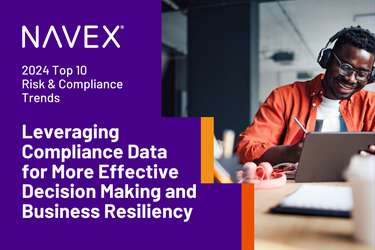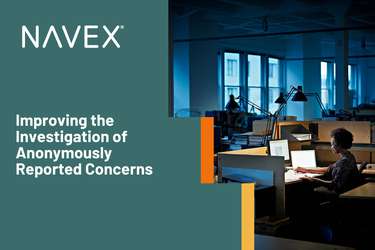The final trend we’ll cover as part of our Top 10 Trends series will appear next week. Today we'll cover #9 - a topic critical to the ethics and compliance officer’s success: program measurement. PWC’s third annual State of Compliance Survey found that ethics officers are under increased pressure to provide evidence of program effectiveness and ROI. And yet, according to a study conducted by Compliance Week and Deloitte, 30 percent of compliance executives say that they make no effort to measure their program’s effectiveness and those that do often assess separate components of their programs and struggle to get a clear picture of the effectiveness of the program as a whole.
The inability to demonstrate a clear ROI can leave disconnects between ethics professionals and senior leadership. One executive recently explained the problem this way: “In our view, compliance professionals believe that their programs are adding more value than executives in their organizations realize.”
Proving the ROI for ethics and compliance has always been a challenge, but with tight budgets and increased scrutiny from regulators and Boards, the importance of making a compelling business case for ethics is more critical than ever. NAVEX Global survey data shows that, despite the external validation that strong internal programs are necessary, budgets remain relatively flat (40 percent of respondents said budgets would remain flat in 2014; another 40 percent showed that they would increase less than 10 percent). Meaningful measurement of program effectiveness will be even more important, and compliance officers will continue to need to do more with less.
Our discussions with executives have revealed some common mistakes to avoid in the coming year as well as some possible solutions to consider:
Common mistake: Allowing the ethics and compliance function to be labeled as the “people who say ‘no’” or the “sales prevention police.”
Solutions:
- Take an active role in repositioning and even selling your program as an ally that assists managers to reduce and manage risks, helps them work more efficiently by building teamwork and creates a culture that identifies problems before they become costly mistakes.
- Emphasize and demonstrate the role of the ethics and compliance office in being proactive and identifying emerging risks, especially those that may be consequences of the organization’s strategic plans.
Common mistake: Providing reports and metrics to Boards and executives that portray ethics and compliance as a limited function; for example, reports that present a piecemeal picture or seem to reduce the scope of the office’s function to counting and tracking helpline calls or collecting annual code certifications.
Solutions:
- Spend time identifying new metrics to measure how well the organization’s specific risks are being addressed so that the compliance function can be appreciated as supporting the organization’s strategic goals and risk management processes.
- When supplying metrics, always include context – how the data compares to industry norms or how the data is trending over time.
- Avoid the trap of delivering multiple metrics that measure distinct program elements without the ability to show how the various elements add up to an effective whole. Remember: if presented in a silo, data can be meaningless; integration and context is critical. For example, link data on the frequency of helpline call topics to the delivery of training on those topics. Or, demonstrate the effectiveness of your third party due diligence efforts by showing improvements in your supplier compliance audits.
- Share these metrics one-to-one with the executives of the affected organizations to discuss potential trends in their departments and collaborate on ways to address any developing concerns.
- Ensure that ethics and compliance data sources are combined to get the most accurate picture of risk. For example, understand how the hotline/case management reports interplay with policy updates and training that needs to occur to minimize emerging risks.
Common mistake: Assuming that the Board and executive team fully understand the changing ethics and compliance landscape and their oversight responsibilities.
Solutions:
- Understand the importance of “managing up.” Identify and leverage key executives who can champion your program and influence their peers.
- Develop and deliver targeted training for your Board and executive leadership tailored to their specific roles and responsibilities as well as the unique risks their actions – or inactions – could bring to the organization.
- Data is critical here. Your organization already collects significant amounts of data about your ethics and compliance activities. Be sure you have a system in place to aggregate this data and demonstrate the trends that are important for senior management to know and address.








